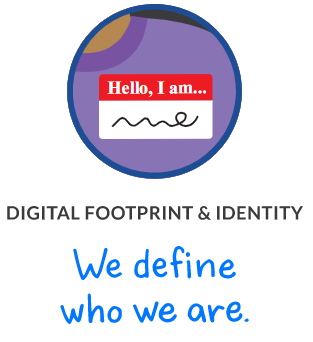Tip #2: Play "Spot The Ad"
When you see advertising on TV or on a billboard, ask your children to figure out what the ad is selling. Sometimes it's obvious, and sometimes it's not. Help them explore why certain pictures, sounds, or words are used to sell certain products.

Well-crafted headlines benefit everyone. They help readers digest information and publishers sell news stories. But what if the headline is misleading? What if it's crafted just to get clicks and not to inform? "Clickbait" headlines may benefit advertisers and publishers (think $$$), but they don't benefit readers. And when they go viral, they can badly misinform the public.
This week, look for clickbait headlines in the media that you consume and discuss them with your family. How many can you find before Sunday rolls around!?

bit.ly/OlyNMV2
All media comes with an author and an agenda. Help kids think critically about any media they view with critical questions that dig below the surface. And to really empower kids, have them create their own media with these same questions in mind.

Tip #1: Encourage Healthy Skepticism
Help your children analyze the info around them, from toy packaging to Instagram posts to news headlines, and question the purpose of the words and images they see. Teach kids how to use fact-checking tools like Snopes and FactCheck.org.

With so much media and information coming at us through the television, phones, social media, and more, it's more important than ever for kids to understand the basics of media literacy. When kids can identify different types of news and media and the methods and meanings behind them, they're on their way to being critical thinkers and smart consumers.
Throughout the month, we will be sharing a set of five tips to help your children become critical thinkers of news and media. Here is a short video to get those conversations started!
bit.ly/OlyNMV5

Olympia West is ready for the Christmas parade!

Help! My Kid Wants to Use Social Media! Get your child -- and yourself -- ready for the next step with these conversation starters. https://www.commonsensemedia.org/blog/help-my-kid-wants-to-use-social-media

After reading the book, How to Catch a Turkey, fourth graders designed and built a turkey trap.


Good news! Fourth graders at West successfully completed an escape room challenge and pardoned Tom the Turkey.


Check out this short video for your elementary kiddos around what a digital footprint really means. We already K-5 students posting and interacting online, so let's start some good habits early! http://bit.ly/OlyDFV2

4 days! The Community Claus Spaghetti Dinner and Family Reading Night are in 4 days. There is still time to reserve your meal pick-up time. Limited seating is available at St. John's for families attending Family Reading Night.
https://www.signupgenius.com/go/30E0944AAA722A02-community2
As soon as you share the first photo of your kid, you're establishing their digital footprint. As kids get older and start creating their own content or engaging with others online, it's important for them to understand the tracks they're leaving behind and what those tracks might reveal. Parents can help guide kids toward creating the kind of footprint they can be proud of. https://www.commonsense.org/education/family-tips/k-5-digital-footprint-and-identity

Video: bit.ly/OlyDFV1
Many kids are already posting and sharing information about themselves. But in a world where oversharing might seem like the norm, it’s important for kids to think about their digital footprints. Listen to what these teens have to say about sharing on social media. Are you making the right sharing decisions?

Good news! Late orders are being accepted for Art to Remember items until December 30, 2021. Any order placed during this time will be shipped directly to your house. You can use the link in the Weekly Notes to place an order or contact Angie.Swartzendruber@olympia.org with questions.

Art to Remember items have arrived and will be sent home with students today! Thank you to all who ordered a keepsake item and supported the school.

In a time of 24/7 connectivity, do the benefits of online sharing outweigh the risks? In Nov. our digital citizenship focus will be on the topic of Digital Footprint & Identity. Look for posts throughout the month to use as discussion points with your family!

Q&A: My kid seems addicted to her phone. What do I do?
It may seem like your kid is addicted (and may even "feel" addicted) to the phone, but it's more likely normal teen behavior. Read more: bit.ly/Oly_QA1

Pumpkins? Catapults? Pumpkin catapults? Fourth graders designed, built, and tested a pumpkin catapult to study motion and energy. Candy pumpkins or orange pompons were launched into a “wagon” or a “semi” to help with pumpkin harvest.



Article: How to Set Screen Rules That Stick Easy tips for limiting kids' computer, TV, game, and movie time. | Caroline Knorr | 2/21/2019 https://www.commonsensemedia.org/blog/how-to-set-screen-rules-that-stick


